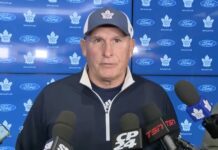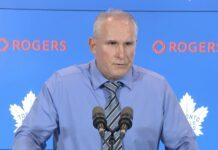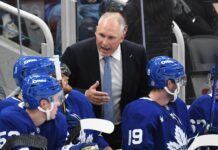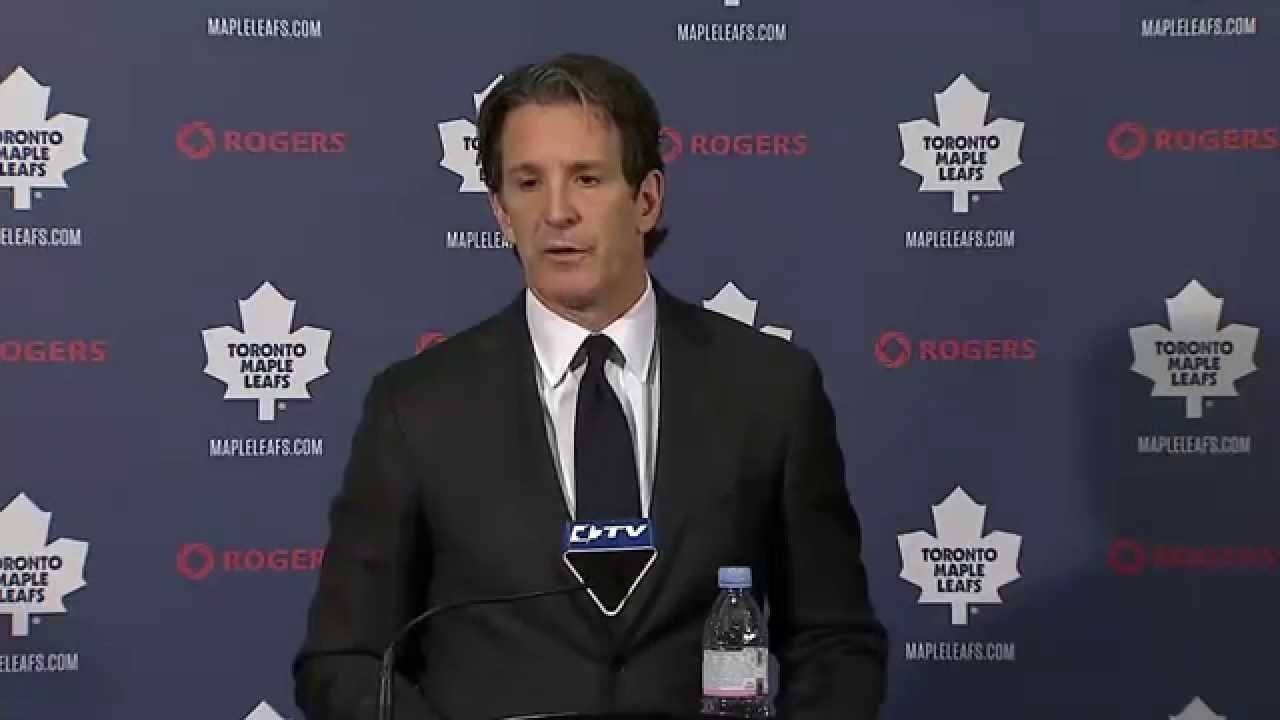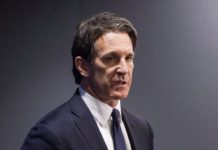There’s so much that has to happen still before this management regime has earned my faith, but I thought Brendan Shanahan’s press conference today hit all the right notes.
I couldn’t stop drawing the contrasts while watching and listening: Brendan Shanahan’s approach couldn’t be more starkly different from Brian Burke’s in the early days of his tenure. It was almost like he was utilizing the early-days Burke era example as a manual for what not to say. Shanahan gave Leafs fans more credit for their patience and desire to follow a draft and development model than Burke. He implicitly acknowledged the need to be bad before you can be good. Additionally, Shanahan and his assistants have kept the details of their plan largely in house — Shanny has had all the insiders guessing on his next move — and they’re much more calculated about their media spots.
What shone through more than anything was the intention to be steadfast about being patient. Burke used to say he didn’t have the stomach to expect and accept years and years of losing. Shanahan explicitly said he does, if that’s what it takes to build a Stanley Cup winner through a patient draft and development model. It’s not anything the other 29 teams aren’t doing, by Shanahan’s own admission, but it’s what needs to happen here.
Shanahan refused to apply a timeline, and he’s smart to realize it’s a death sentence in this market to put a definitive target date on a science as inexact as the drafting and developing of teenage-early 20s hockey players. Of course, we all remember the five-year plan quote followed Burke around his entire tenure until they ultimately became his famous last words.
Most refreshing to me, he didn’t distance himself from the failures of this season, which are vast. He acknowledged the attempt to shore up the team’s depth and see what the core could do with a little more support. He admitted he simply didn’t have enough to go on when he first got here last Spring and “needed to see for himself” or else he’d “just be guessing.”
It’s disingenuous to suggest this past season was a part of the plan all along. The fourth overall pick is a major consolation, but a tirefire of that severity was in nobody’s handbook. The Leafs have seen the value on their biggest assets take a hit. They’ve been the laughingstock of the league. Their character and “attitude” has been questioned, not just by the media but by coaches and management, including Shanahan himself today. He didn’t put this team together, but he did preside over it while the worst season in recent Leafs history — a complete circus off and on the ice — transpired. There was some clear evidence of inexperience at the top at times this season (the radio silence during some of the insane media incidents, the way the Kadri suspension was handled). Maybe a lost season had to happen for Shanahan to be sure about the degree of change needed, but it would’ve been blatant spin to imply he saw it all coming and aimed low for the draft pick.
Realizing the depth of change required early in January, while the team was technically still in a playoff spot, was a good save. Getting out well in advance of the deadline and making the team worse while getting future assets back for expiring contracts was smart business, too. The Clarkson trade, no matter how it came about, was a huge burden lifted. Finishing fourth last was another biggie, and should be a springboard for this rebuild. Pulling the trigger on Nonis was the right move, if overdue. Revamping the scouting and development staffs following Mark Hunter’s evaluation period makes solid sense.
And today, Shanahan’s tones struck me as very in tune. If it wasn’t so early yet, I might just be hopeful for what’s to come.
Those Still Standing
Scouts still employed by #leafs: Mike Penny, Tom Watt, George Armstrong, John Lilley, Garth Malarchuk, Thommie Bergman, Nikolai Ladygin.
— Chris Johnston (@reporterchris) April 13, 2015
Dave Morrison, the #leafs director of amateur scouting, remains employed as well.
— Chris Johnston (@reporterchris) April 13, 2015
It will be interesting to see how many scouts Mark Hunter hires as replacements for the outbound staff. You often see the argument in the fanbase and media that the Leafs should employ a million scouts to cover all corners of the globe because scouting budgets aren’t capped, but logistically that’s probably not an efficient model.
Anthony Petrielli asked Dave Morrison about this type of thing when MLHS had their in-depth three-part interview series with Morrison back in the summer.
DM: There’s some people in the scouting business who think smaller staffs are a lot more ideal. There’s less opinions, so if you hire the right people you don’t need that many. I think you can have a larger staff, and have the right people as well, and have a certain level of communication. I’ve tried to make it so that our scouting staff is a team. We work in unison and we have our own little team that has to be on the same page. That’s what I’ve tried to do with our staff. I really like the group that we have.
Maybe, under Mark Hunter, we’re seeing a change in the philosophy away from a larger staff in favour of the right staff, one that is cohesive and consists of a group of voices Hunter really trusts. It’s far from surprising Hunter cleared out a good number of the scouts; it will be more interesting to see what shape his new scouting department is going to take.


